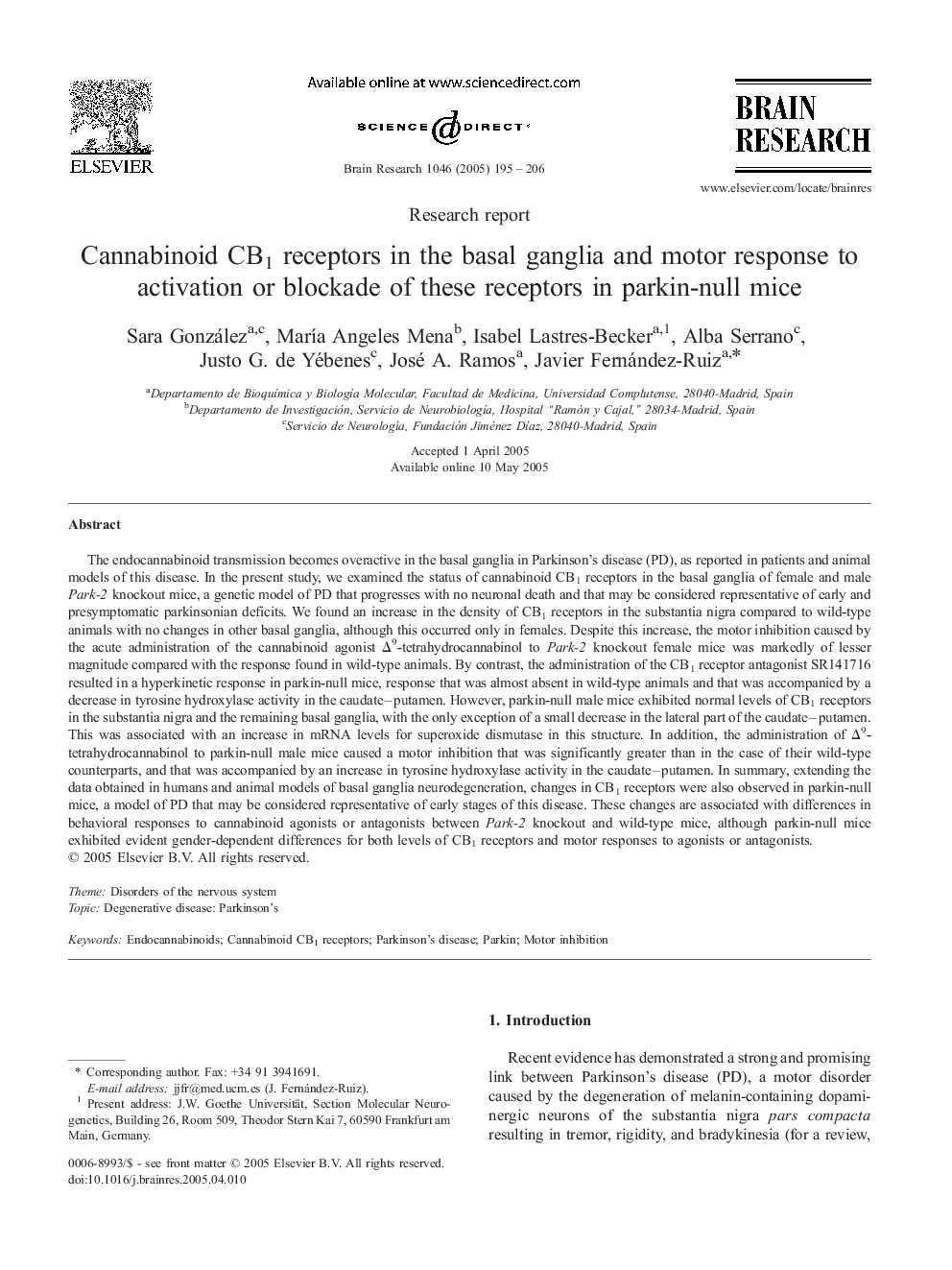| کد مقاله | کد نشریه | سال انتشار | مقاله انگلیسی | نسخه تمام متن |
|---|---|---|---|---|
| 9416353 | 1614332 | 2005 | 12 صفحه PDF | دانلود رایگان |
عنوان انگلیسی مقاله ISI
Cannabinoid CB1 receptors in the basal ganglia and motor response to activation or blockade of these receptors in parkin-null mice
دانلود مقاله + سفارش ترجمه
دانلود مقاله ISI انگلیسی
رایگان برای ایرانیان
کلمات کلیدی
موضوعات مرتبط
علوم زیستی و بیوفناوری
علم عصب شناسی
علوم اعصاب (عمومی)
پیش نمایش صفحه اول مقاله

چکیده انگلیسی
The endocannabinoid transmission becomes overactive in the basal ganglia in Parkinson's disease (PD), as reported in patients and animal models of this disease. In the present study, we examined the status of cannabinoid CB1 receptors in the basal ganglia of female and male Park-2 knockout mice, a genetic model of PD that progresses with no neuronal death and that may be considered representative of early and presymptomatic parkinsonian deficits. We found an increase in the density of CB1 receptors in the substantia nigra compared to wild-type animals with no changes in other basal ganglia, although this occurred only in females. Despite this increase, the motor inhibition caused by the acute administration of the cannabinoid agonist Î9-tetrahydrocannabinol to Park-2 knockout female mice was markedly of lesser magnitude compared with the response found in wild-type animals. By contrast, the administration of the CB1 receptor antagonist SR141716 resulted in a hyperkinetic response in parkin-null mice, response that was almost absent in wild-type animals and that was accompanied by a decrease in tyrosine hydroxylase activity in the caudate-putamen. However, parkin-null male mice exhibited normal levels of CB1 receptors in the substantia nigra and the remaining basal ganglia, with the only exception of a small decrease in the lateral part of the caudate-putamen. This was associated with an increase in mRNA levels for superoxide dismutase in this structure. In addition, the administration of Î9-tetrahydrocannabinol to parkin-null male mice caused a motor inhibition that was significantly greater than in the case of their wild-type counterparts, and that was accompanied by an increase in tyrosine hydroxylase activity in the caudate-putamen. In summary, extending the data obtained in humans and animal models of basal ganglia neurodegeneration, changes in CB1 receptors were also observed in parkin-null mice, a model of PD that may be considered representative of early stages of this disease. These changes are associated with differences in behavioral responses to cannabinoid agonists or antagonists between Park-2 knockout and wild-type mice, although parkin-null mice exhibited evident gender-dependent differences for both levels of CB1 receptors and motor responses to agonists or antagonists.
ناشر
Database: Elsevier - ScienceDirect (ساینس دایرکت)
Journal: Brain Research - Volume 1046, Issues 1â2, 7 June 2005, Pages 195-206
Journal: Brain Research - Volume 1046, Issues 1â2, 7 June 2005, Pages 195-206
نویسندگان
Sara González, MarÃa Angeles Mena, Isabel Lastres-Becker, Alba Serrano, Justo G. de Yébenes, José A. Ramos, Javier Fernández-Ruiz,